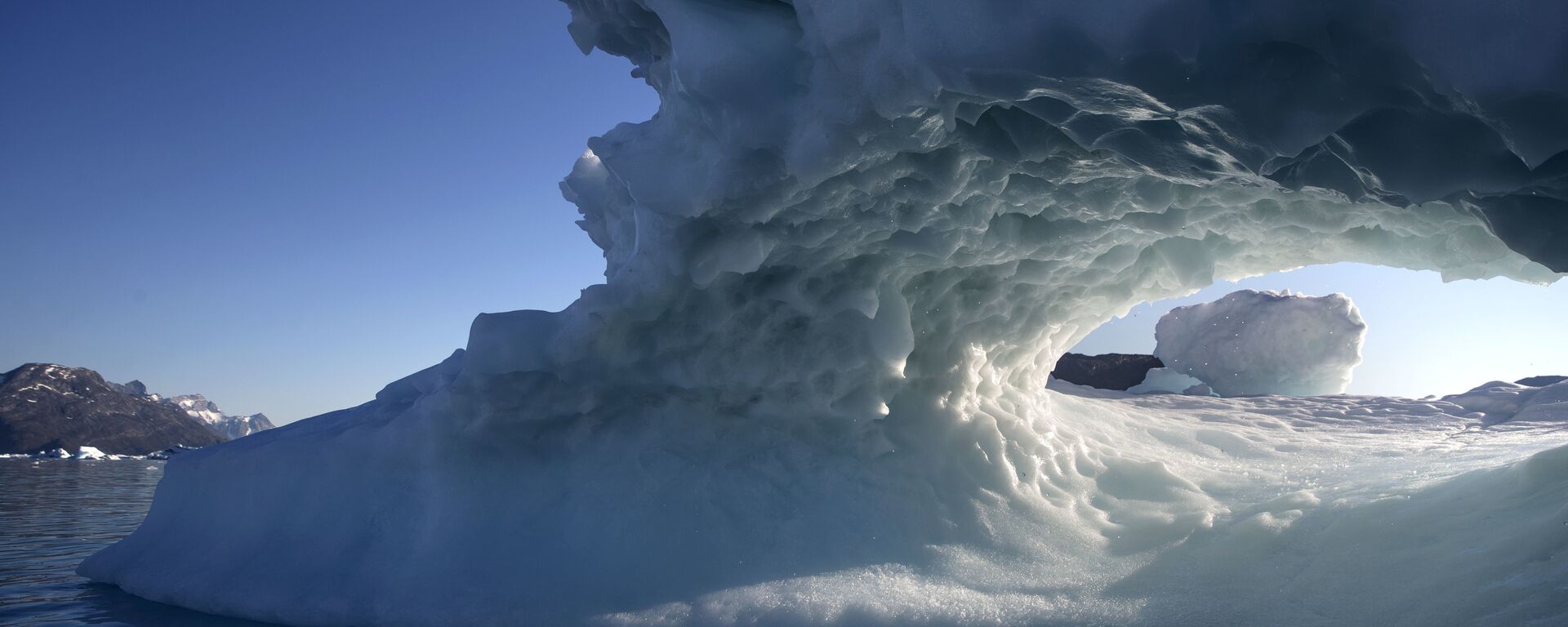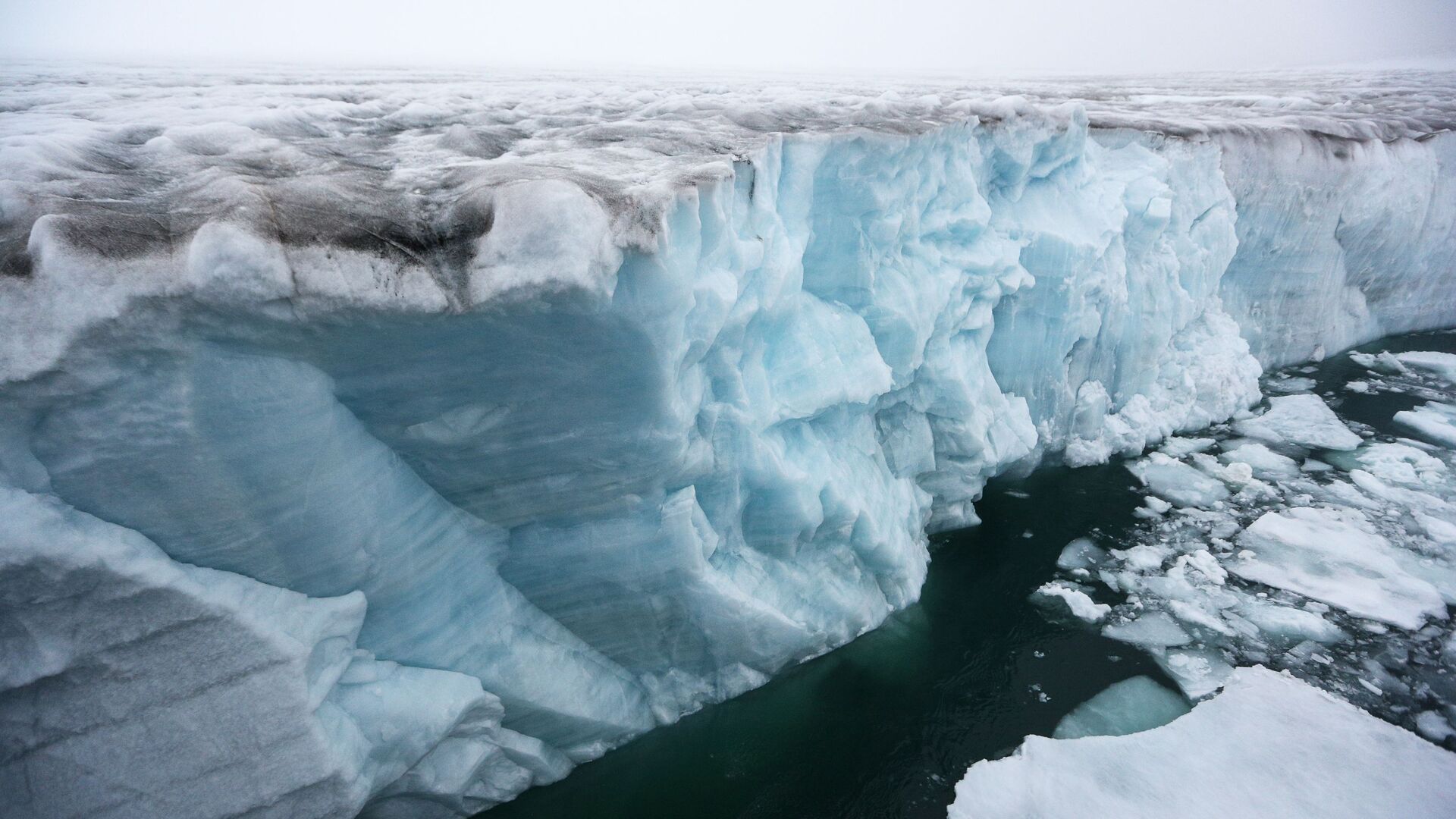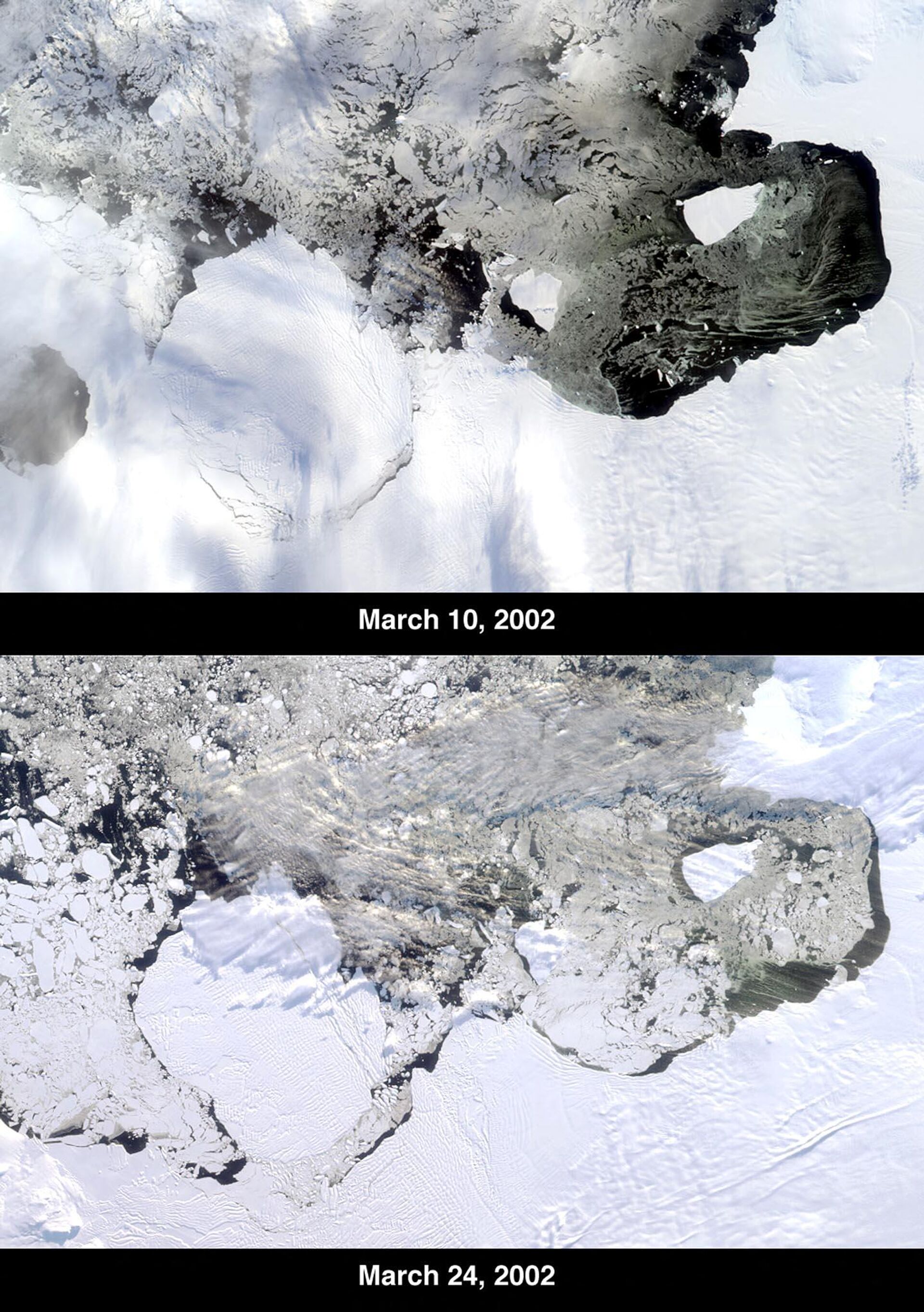https://sputnikglobe.com/20230216/doomsday-glacier-rapidly-shedding-ice--we-should-all-be-very-concerned-study-warns-1107505852.html
'Doomsday' Glacier Rapidly Shedding Ice & We 'Should All Be Very Concerned,' Study Warns
'Doomsday' Glacier Rapidly Shedding Ice & We 'Should All Be Very Concerned,' Study Warns
Sputnik International
The so-called 'Doomsday' Thwaites glacier is shedding ice as warm water is increasingly getting into its cracks, a study warned.
2023-02-16T18:32+0000
2023-02-16T18:32+0000
2023-04-21T10:43+0000
science & tech
glacier
antarctic
ice sheets
climate change
global warming
https://cdn1.img.sputnikglobe.com/img/107665/29/1076652937_0:160:3073:1888_1920x0_80_0_0_b1505067194ef358d226415a4eff2dc2.jpg
The risk of a dangerous rise in sea level is being fueled by a relentless attack on the Thwaites Glacier, Earth’s widest, by fast-warming oceans, new research has warned.Thwaites, the size of which is often likened to that of the State of Florida, has been dubbed the “Doomsday Glacier” for a reason. It holds over half a meter (1.6 feet) of potential global sea level surge. Accordingly, it could have a knock-on effect on neighboring glaciers, jointly triggering a subsequent three-meter (9.8-foot) rise. The glacier, located in West Antarctica, partly relies on an ice shelf jutting out into the ocean to anchor it in place.But the ice shelf is increasingly vulnerable to warmer ocean waters. Over the years, researchers have pointed to changes in the Thwaites Glacier, as deep fractures in its eastern ice shelf have been revealed by satellite images. Now, a team of scientists from the US and UK, who published their findings in the journal Nature, have revealed that deep cracks and so-called “staircase” formations or “terraces” in the ice are melting much faster than anticipated.The team - part of the International Thwaites Glacier Collaboration - spent about six weeks on the glacier from late 2019 until early 2020, and relied on an underwater robot vehicle known as Icefin, along with other existing data, to monitor the glacier’s "grounding line." This latter part of the glacier is the point where ice slides off the glacier into the ocean.In one of two papers published on Wednesday in Nature, led by Cornell University-based scientist Britney Schmidt, researchers found that warmer water was making its way into crevasses and other openings known as terraces, causing sideways melting of 30 meters (98 feet) or more per year.While scientists previously had to rely on satellite images in their study of the glacier, this time the team was able to look at where "the action begins," Schmidt added, pointing out that, “That’s not what the system would look like if it wasn’t being forced by climate change.”Looking ahead, the current findings will hopefully be used in modeling climate change as the future behavior of these massive chunks of ice is predicted.An earlier assessment, carried out in 2022, suggested that the entire West Antarctic Ice Sheet would most likely take 2,000 years to disintegrate after the so-called tipping point has been crossed.
https://sputnikglobe.com/20230106/study-claims-two-thirds-of-worlds-glaciers-could-disappear-by-2100-1106088105.html
antarctic
Sputnik International
feedback@sputniknews.com
+74956456601
MIA „Rossiya Segodnya“
2023
News
en_EN
Sputnik International
feedback@sputniknews.com
+74956456601
MIA „Rossiya Segodnya“
Sputnik International
feedback@sputniknews.com
+74956456601
MIA „Rossiya Segodnya“
doomsday glacier, thwaites glacier, shedding ice, warm water getting into its cracks, international thwaites glacier collaboration, forced by climate change
doomsday glacier, thwaites glacier, shedding ice, warm water getting into its cracks, international thwaites glacier collaboration, forced by climate change
'Doomsday' Glacier Rapidly Shedding Ice & We 'Should All Be Very Concerned,' Study Warns
18:32 GMT 16.02.2023 (Updated: 10:43 GMT 21.04.2023) Scientists have long warned that glaciers, melting away under the impact of global warming, would result in rising sea levels, bringing with them the dangers of flooding and shrinking water supplies for the global population.
The risk of a dangerous rise in sea level is being fueled by a relentless attack on the Thwaites Glacier, Earth’s widest, by fast-warming oceans,
new research has warned.
Thwaites, the size of which is often likened to that of the State of Florida, has been dubbed the “Doomsday Glacier” for a reason. It holds over half a meter (1.6 feet) of potential global sea level surge. Accordingly, it could have a knock-on effect on neighboring glaciers, jointly triggering a subsequent three-meter (9.8-foot) rise. The glacier, located in West Antarctica, partly relies on an ice shelf jutting out into the ocean to anchor it in place.
But the ice shelf is increasingly vulnerable to
warmer ocean waters. Over the years, researchers have pointed to changes in the Thwaites Glacier, as deep fractures in its eastern ice shelf have been revealed by satellite images.
Now, a team of scientists from the US and UK, who published their findings in the journal Nature, have revealed that deep cracks and so-called “staircase” formations or “terraces” in the ice are melting much faster than anticipated.
The team - part of the International Thwaites Glacier Collaboration - spent about six weeks on the glacier from late 2019 until early 2020, and relied on an underwater robot vehicle known as Icefin, along with other existing data, to monitor the glacier’s "grounding line." This latter part of the glacier is the point where ice slides off the glacier into the ocean.
In one of two papers published on Wednesday in Nature, led by Cornell University-based scientist Britney Schmidt, researchers found that warmer water was making its way into crevasses and other openings known as terraces, causing sideways melting of 30 meters (98 feet) or more per year.
“Warm water is getting into the weakest parts of the glacier and making it worse. That is the kind of thing we should all be very concerned about,” one of the leaders of the research, Cornell University-based scientist Britney Schmidt, was cited as saying.
While scientists previously had to rely on satellite images in their study of the glacier, this time the team was able to look at where "the action begins," Schmidt added, pointing out that, “That’s not what the system would look like if it wasn’t being forced by climate change.”
Looking ahead, the current findings will hopefully be used in modeling climate change as the future behavior of these
massive chunks of ice is predicted.
An earlier assessment, carried out in 2022, suggested that the entire West Antarctic Ice Sheet would most likely take 2,000 years to disintegrate after the so-called tipping point has been crossed.

6 January 2023, 16:17 GMT




